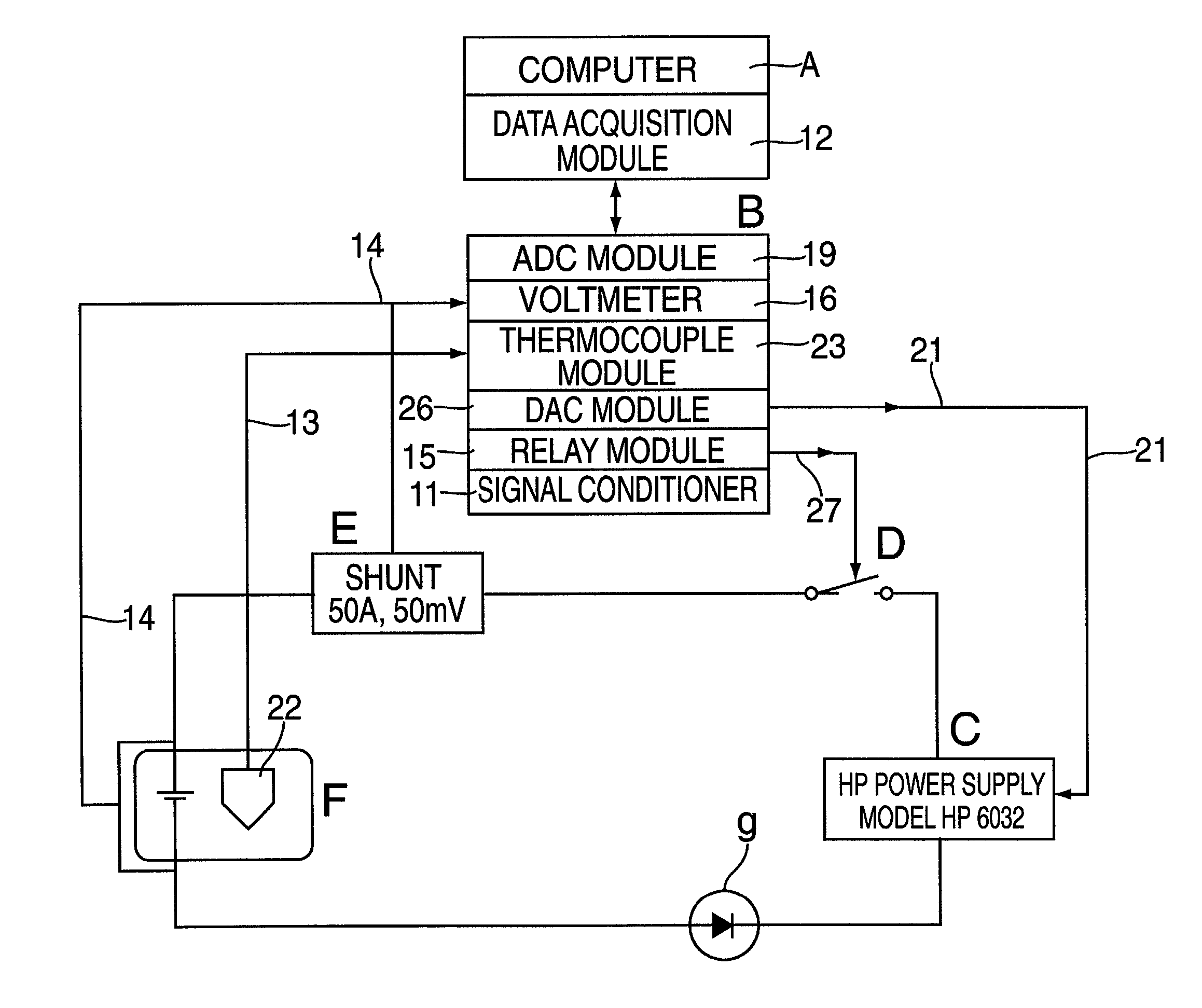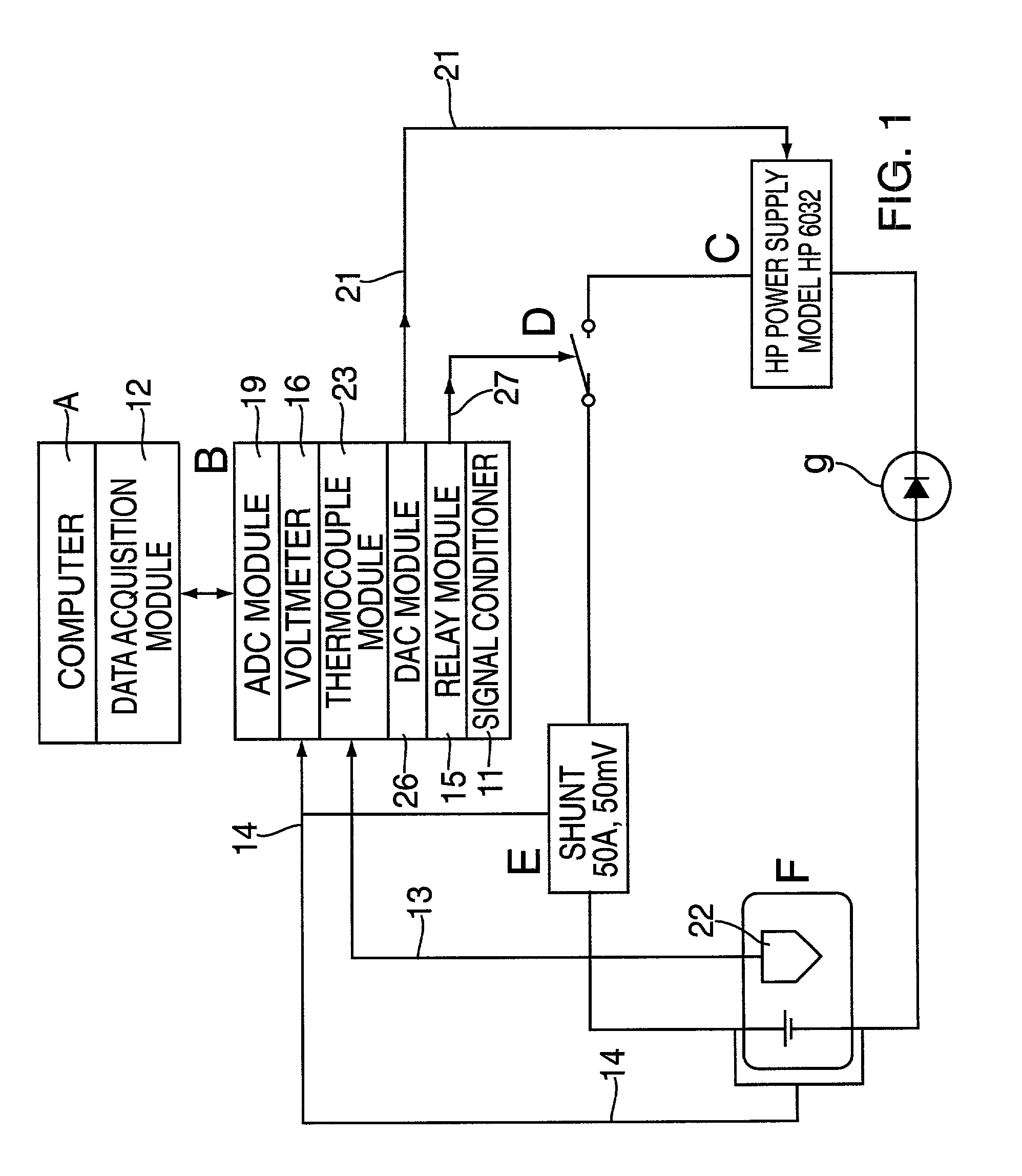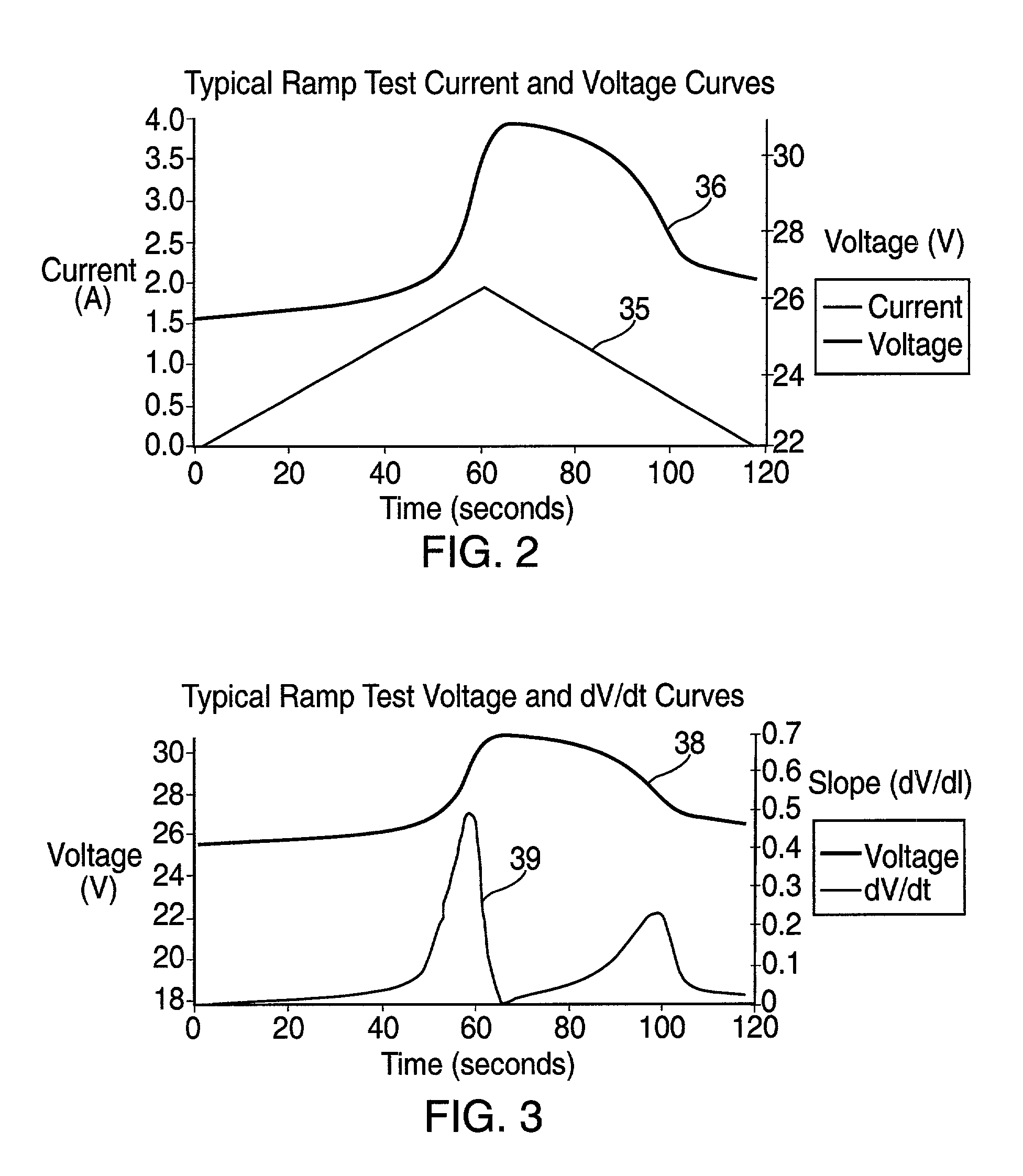Method and apparatus for predicting the available energy of a battery
a technology of available energy and battery, applied in the direction of parallel operation of dc sources, speed/acceleration/shock measurement devices, program control, etc., can solve the problems of battery wear, significant amount of charging and discharging, time-consuming,
- Summary
- Abstract
- Description
- Claims
- Application Information
AI Technical Summary
Benefits of technology
Problems solved by technology
Method used
Image
Examples
Embodiment Construction
[0070] The following is an example of the use of the invention for a 24V, 18 Ah a lead-acid rechargeable battery formed by 4 Panasonic LC-R129P1 cells connected in a serial, parallel configuration. The battery was removed from a UPS system and connected to the battery test stand. The battery was subjected to a 1.5 A charge pulse. Internal resistance was determined to equal 65.4 Milliohms. The battery was then subjected to the current ramp test. The open circuit voltage of the battery was measured at 25.21V. Two gas points were detected, one on the rising half of the ramp, and one on the decreasing half of the ramp. The Gas Up point occurred at 1.9 A, 29.01V. The Gas Down point occurred at 0.99 A, 27.63V. Battery case temperature was measured at 24.38 C.
[0071] Using these values in the available energy determination formula (2) given above, the available energy is predicted to be:
Available energy=25.21*1.872+24.38*-0.184+65.4*-0.062+1.9*1.415+29.01*-0.4-85+0.99*1.632+27.63*0.5498-36....
PUM
| Property | Measurement | Unit |
|---|---|---|
| energy | aaaaa | aaaaa |
| internal resistance | aaaaa | aaaaa |
| open circuit voltage | aaaaa | aaaaa |
Abstract
Description
Claims
Application Information
 Login to View More
Login to View More - R&D
- Intellectual Property
- Life Sciences
- Materials
- Tech Scout
- Unparalleled Data Quality
- Higher Quality Content
- 60% Fewer Hallucinations
Browse by: Latest US Patents, China's latest patents, Technical Efficacy Thesaurus, Application Domain, Technology Topic, Popular Technical Reports.
© 2025 PatSnap. All rights reserved.Legal|Privacy policy|Modern Slavery Act Transparency Statement|Sitemap|About US| Contact US: help@patsnap.com



